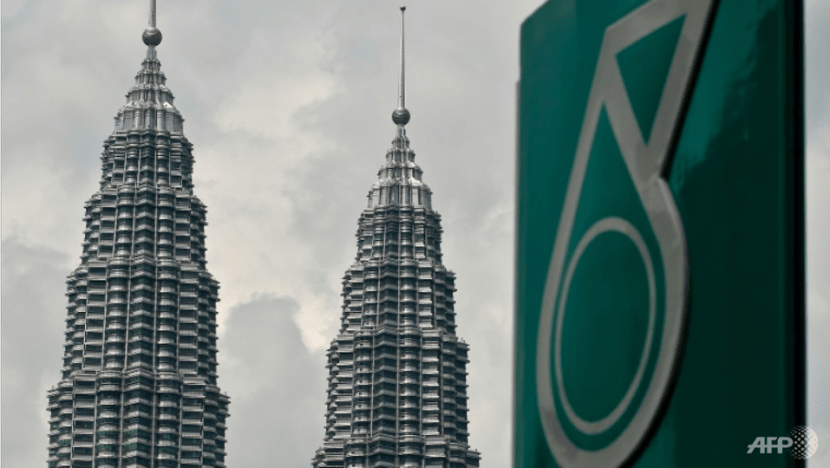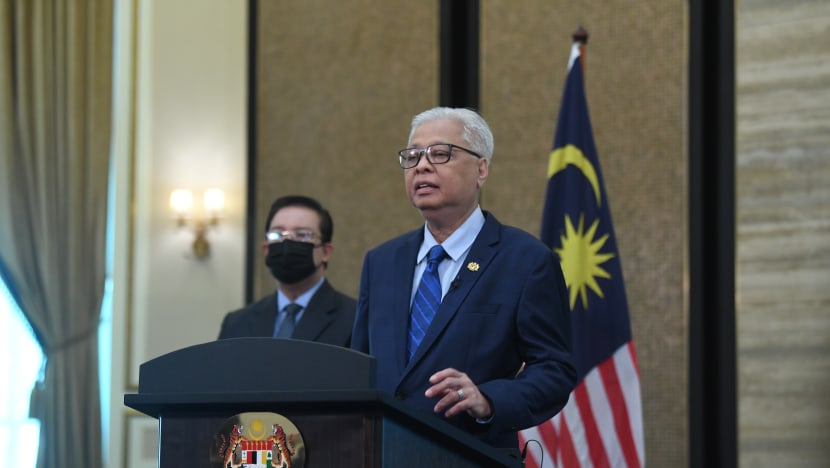Commentary: Malaysia pledges to go carbon neutral but there’s a catch
Malaysia’s new target is more ambitious than any set by a Southeast Asian country so far. But the qualifier is achievement by 2050 "at the earliest", says a climate researcher.

Energy-exporting Malaysia is grappling with falling oil prices and weak overseas demand. (Photo: AFP/Manan Vatsyayana)
SINGAPORE: Malaysia’s newly minted prime minister Ismail Sabri Yaakob surprised the region in a parliamentary speech on the 12th Malaysia Plan last month. His government moved the needle on a key climate target – to go carbon neutral by 2050.
Malaysia signed up to the Paris Agreement in 2015, promising that it would join the world in taking action to curb carbon emissions.
It tentatively put forward the first promise to cut emissions intensity of gross domestic product by 45 per cent by 2030; 35 per cent was unconditional while 10 per cent depended on the availability of climate finance, technology transfer and capacity building from developed countries.
Malaysia’s second iteration of this target keeps the same level of cuts but all the 45 per cent is now unconditional.
These changes occurred in the midst of political uncertainties, including the implosion of the 1MDB scandal during the administration of former prime minister Najib Razak in 2015 and the removal of Muhyiddin Yassin a couple of months ago.
Do ambitious pledges during such strange times hold water?
Signatories set and update their targets and measures in their Nationally Determined Contributions (NDCs) to keep the global temperature rise well below 2 degrees Celcius. But the targets and baselines across countries are not readily comparable.
Set in 2015, Malaysia’s target was 45 per cent while Indonesia’s was 41 per cent. Both countries have specified the proportion and nature of their conditional commitments. At face value, Malaysia appears to be more ambitious than Indonesia.
However, Malaysia has opted to measure its emissions in terms of intensity relative to its GDP. As GDP increases, a country is allowed a higher emissions quota for the same percentage of reduction.
Indonesia committed to an absolute emission reduction, which is more challenging given that its faster economic growth would demand a higher emissions reduction for the same percentage.
NOT A HARD AND FAST COMMITMENT
To its credit, Malaysia’s most recent commitment to carbon neutrality is a much more straightforward target.
For every tonne of carbon emission, the country has to find an equivalent tonne of carbon offset. The carbon on both sides of the equation is absolute. There is no sugar coating.
Still, the best practice is to separate the reporting of emission reduction and emission removal. The latter is controversial.
Also, the phrase "at the earliest" in the prime minister’s pledge suggests that the 2050 target is not a hard and fast one. But having a timeline gives climate advocates ammunition for holding the government accountable.
In terms of ambition, Malaysia is leading the pack in Southeast Asia.
The other countries may feel slightly pressured to follow suit. Governments have to justify their lag to both domestic and international media.
Countries can also claim the image of a climate leader in touch with the latest sustainability practices in finance, technology and governance. A huge stream of development finance will flow into countries that are ready to make the climate transition.
Every year, 43 per cent of the climate finance (US$30.6 billion) from the developed to the developing countries has been directed to Asia. While Thailand received US$533 million and Indonesia US$773 million from multilateral development banks in 2018, Malaysia received nothing.

CAPTURING THE MOMENTUM
Along with the ambitious target, Malaysia is introducing two strong policy measures.
First is halting the construction of new coal-fired power plants. The Philippines declared a moratorium first and Malaysia followed suit without legislative support.
Another mechanism is the establishment of a carbon-trading scheme – initially at the domestic level and later at the international level via Singapore’s new global hub for carbon credit exchange. These measures may be music to the ears of sustainability champions.
Unfortunately, Malaysia has been notorious for its policy back-flipping, especially when it loses sight of the mega challenges.
The greyness of the pandemic recovery packages across Southeast Asia suggests that going green is difficult. Shell’s energy scenarios further indicate that the immediate challenge for many countries is getting wealthy and healthy.
These priorities are galvanised by a wave of nationalism that sees countries becoming more selfish when securing their energy security and less cooperative on climate transition.
Malaysia may quickly find itself the only country sticking its neck out in the region. It might not be able to endure short-term economic pain and as a result might water down its climate policy measures.
Even China has been hit by a severe energy shortage due to soaring coal prices and ambitious emission standards. The Europeans are scrambling to get their factories running as they approach winter with limited gas supply from Norway and Russia.
The Malaysians may well question whether they are ready to take that leap. They should not quiver. Policymakers need to realise that it is a far larger risk if one does not get across to the land of renewables.
Dr Ryan Wong is Lead Researcher (Climate Policy) at the Climate Change in Southeast Asia Programme, ISEAS – Yusof Ishak Institute. This commentary first appeared on the ISEAS-Yusof Ishak blog The Fulcrum.

















